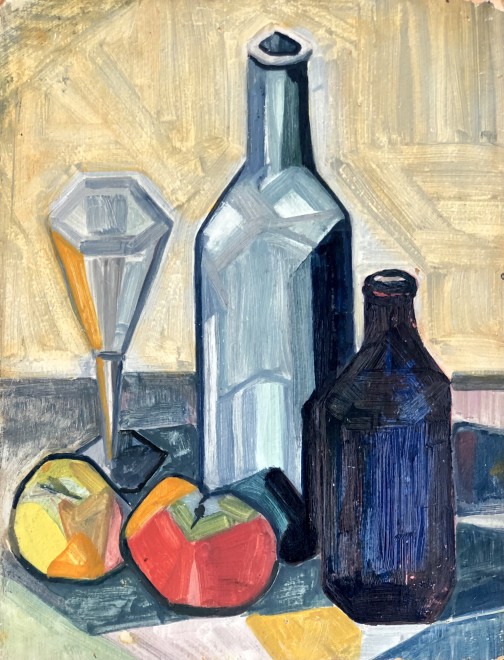Provenance
The Artist's Estate
Note: Elizabeth Ronget was born in Poland but studied in Berlin and Paris. In Paris she met and married Paul Ronget, a doctor, who introduced her to painter André Lhote. In Lhote's studio Ronget discovered color and became familiar with the revolutionary work of Paul Cézanne. Under the influence of Lhote, Ronget's forms simplified and her palate changed to incorporate earth tones of ochre, browns, mauves and blues. In the academic Cubism, which assimilated by Ronget, forms are flattened and simplified, backgrounds are reduced to fields of geometric pattern. Ronget's choice of subject matter was in keeping with other Cubists and included card players, musical instruments, and people gathered at bar.
In 1934 Ronget began exhibiting at the Salon d'Automne with André Lhote. A series of one woman exhibitions followed and resulted in sales to collectors throughout Western Europe. In 1941, after the invasion of France, Ronget and her husband moved to Provence. Although she never returned to Paris she continued to participate in exhibitions. In 1946 she showed at the Salon des Indépendants; in 1953 at the Salon des Réalités Nouvelles; and in 1956 at the Salon des Indépendants.
